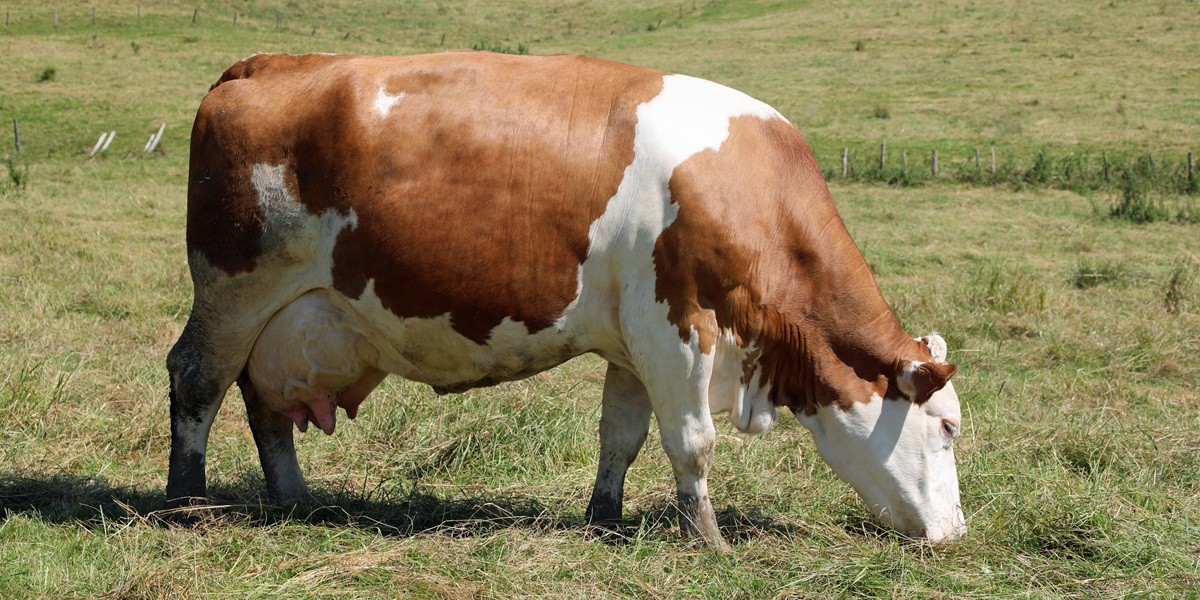If you’re raising cattle, breeding for milk, beef, or even showing livestock, understanding how long cows are pregnant is essential. Whether you’re a seasoned rancher or a beginner farmer, knowing the gestation period will help you plan for calving season, manage herd health, and ensure both cow and calf get the care they need.
Key Takeaways
- Average cow gestation is about 283 days (9 months and a week), but can range from 279–287 days depending on breed, calf sex, and other factors.
- Pregnancy has three stages — early (delicate embryo development), mid (steady calf growth), and late (rapid growth and higher nutrition needs).
- Signs of pregnancy include missed heat cycles, gradual belly enlargement, udder development, and confirmed results from vet checks or tests.
- Preparing for calving means readying a clean birthing space, stocking supplies, and monitoring closely in the last weeks for signs of labor.
- Gestation length can be influenced by breed genetics, nutrition quality, calf gender, and environmental stressors like heat or cold.
The Average Gestation Period for Cows
On average, cows are pregnant for about 283 days — roughly 9 months and a week. This is very similar to the human pregnancy length, but it can vary slightly depending on factors like:
- Breed – Some breeds, such as larger beef cattle, may have slightly longer gestation periods than dairy breeds.
- Calf Sex – Cows carrying bull calves are often pregnant a few days longer than those carrying heifers.
- Individual Variation – Just like humans, some cows naturally deliver a little early or late.
In general, the range is 279 to 287 days. Anything outside this window may require veterinary attention.
Accurately predicting a cow’s calving date allows farmers to schedule feed adjustments, vaccinations, and veterinary visits at the right times. It also reduces the risk of calving problems by ensuring the cow is in optimal health before labor begins. While a few days early or late is normal, a deviation of over a week could be a sign of underlying issues.
Modern tools like gestation calculators and breeding records are invaluable for tracking due dates. Many farmers note the breeding date immediately after service and count forward to estimate calving. For operations with multiple cows, organized records can prevent missed births and ensure timely assistance during labor.
Pregnancy Stages in Cows
1. Early Pregnancy (First Trimester)
- Fertilization occurs after successful breeding.
- The embryo implants in the uterus and begins developing vital organs.
- This stage is delicate; stress, poor nutrition, or disease can cause early pregnancy loss.
During this time, cows should be handled gently to minimize stress. Any major changes to their environment, diet, or handling routines can impact embryo survival. Farmers should also focus on preventing reproductive infections, which can silently cause losses in the early stage.
Ultrasound checks around 30–40 days can confirm pregnancy and detect multiple embryos, though twins are rare in cattle. Early confirmation also helps identify cows that didn’t conceive so they can be rebred promptly, keeping the calving schedule consistent.
2. Mid Pregnancy (Second Trimester)
- The calf’s skeletal structure and major organs continue developing.
- The cow’s nutritional needs increase but are still moderate compared to the final stage.
- Routine herd health checks, vaccinations, and parasite control are important.
This stage is generally low-risk, but it’s still important to maintain steady weight gain and good body condition in the cow. Sudden weight loss or poor forage quality during this period can lead to a weak calf at birth. Mid-pregnancy is also a good time to rotate pastures to provide clean grazing areas.
Farmers often use the second trimester to prepare for calving season—repairing fences, cleaning barns, and stocking supplies. The cow’s energy requirements aren’t yet at their peak, making this an ideal window to fine-tune herd management without putting undue strain on the animals.
3. Late Pregnancy (Third Trimester)
- Rapid calf growth occurs, with most weight gain in the final two months.
- The cow’s energy and protein requirements increase significantly.
- Monitor closely for signs of illness, injury, or early labor.
During the last trimester, it’s critical to provide high-quality feed rich in energy and protein. This supports both calf development and the cow’s own body reserves, which will be essential for milk production after birth. Deficiencies at this stage can lead to calving problems and reduced milk yield.
Cows should be brought into a clean, sheltered area as the due date approaches, especially in bad weather. Close observation during the last 2–3 weeks can catch early signs of labor, allowing for timely assistance if complications arise. Regular checks also help ensure the cow doesn’t develop conditions like milk fever or ketosis.
Signs a Cow Is Pregnant
If you’re not using ultrasound or blood tests, you can still watch for:
- Absence of heat cycles
- Behavioral changes (calmer demeanor)
- Gradual belly enlargement
- Enlarged udder closer to calving
In addition to physical signs, experienced farmers notice subtle changes in a cow’s posture and appetite. Pregnant cows often stand and move more cautiously, especially in the later stages. They may also graze at a slower pace, conserving energy for calf development.
Cow pregnancy tests can confirm pregnancy with a high degree of accuracy. These are especially useful in large herds where visual monitoring may be challenging. Using multiple detection methods ensures accurate results and prevents surprises during calving season.
Preparing for Calving
Knowing the due date is crucial for:
- Providing a clean, safe calving area
- Stocking calving supplies (towels, iodine, calf puller if necessary)
- Monitoring for complications like dystocia (difficult birth)
Two to three weeks before the expected date, cows should be moved to a calving pen or pasture with good drainage and shelter. This reduces the risk of infection and provides a controlled environment for monitoring. Farmers often install cameras or schedule regular checks to catch the first signs of labor.
Training farm staff or family members on how to assist during birth is equally important. Even if a veterinarian is available, knowing how to act quickly in an emergency can save both cow and calf. Keeping vet contact numbers and transportation ready ensures help arrives fast if needed.
Factors That Affect Gestation Length
Several elements can shift a cow’s pregnancy length:
- Breed differences (e.g., Holstein vs. Angus)
- Nutrition quality during pregnancy
- Calf size and sex
- Environmental stressors like heat, cold, or overcrowding
Cows exposed to extreme weather often calve earlier or later than expected. Heat stress in summer can shorten gestation, while cold stress in winter sometimes prolongs it. Adjusting feed and shelter to match seasonal conditions can help stabilize calving dates.
Calf genetics also play a role. Larger breeds or calves with certain sire lines may extend gestation by several days. Knowing your herd’s breeding history helps predict these variations and plan accordingly.
FAQ – How Long Are Cows Pregnant?
Q: Can cows give birth earlier than 279 days?
Yes, but it’s uncommon. Premature calves may require extra care to survive, especially if born more than two weeks early.
Q: Do cows always calve on their due date?
No. The due date is an estimate, and cows often calve a few days before or after.
Q: How can I tell if my cow is close to calving?
Watch for udder filling, pelvic ligament relaxation, and restlessness. These signs often appear within 24–48 hours of birth.
Q: Does calf gender affect pregnancy length?
Yes. Cows carrying bull calves are often pregnant a few days longer than those carrying heifers.
Final Thoughts
So, how long are cows pregnant? The short answer is about 283 days, but that’s just the average. Good recordkeeping, proper nutrition, and regular health checks will help ensure a smooth pregnancy and healthy calf. Whether you’re running a large cattle operation or caring for a small family cow, understanding the pregnancy timeline is key to successful calving and herd health.
How To Raise Mini Cows For Prepping And SHTF
How To Build An Endless Hot Water System Without Electricity (Video)
Never Feed This To Your Livestock














